At their most basic, roofs are a cover to protect a building against the weather. While simple flat roofs are common, bespoke sculptural roofs turn buildings into landmarks often taking advantage of the picturesque settings they are set in.
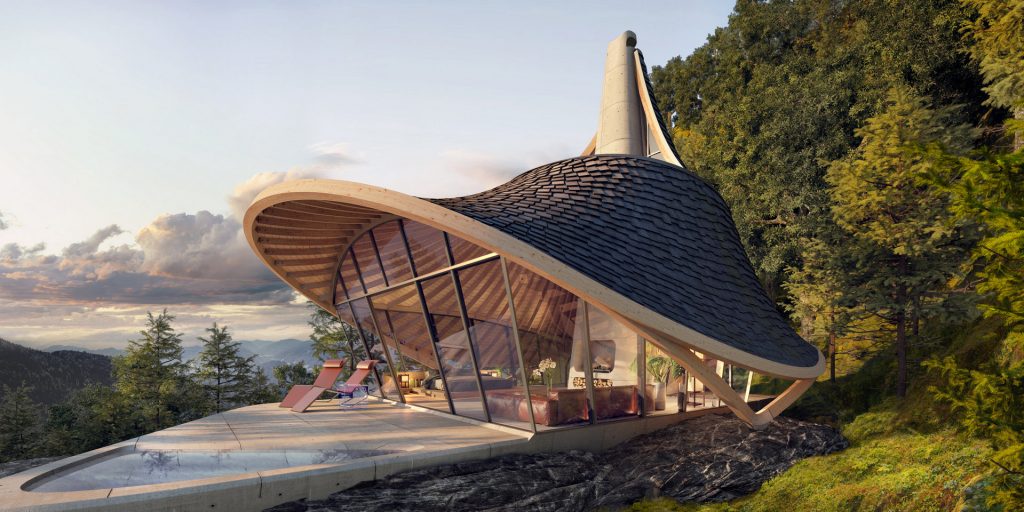
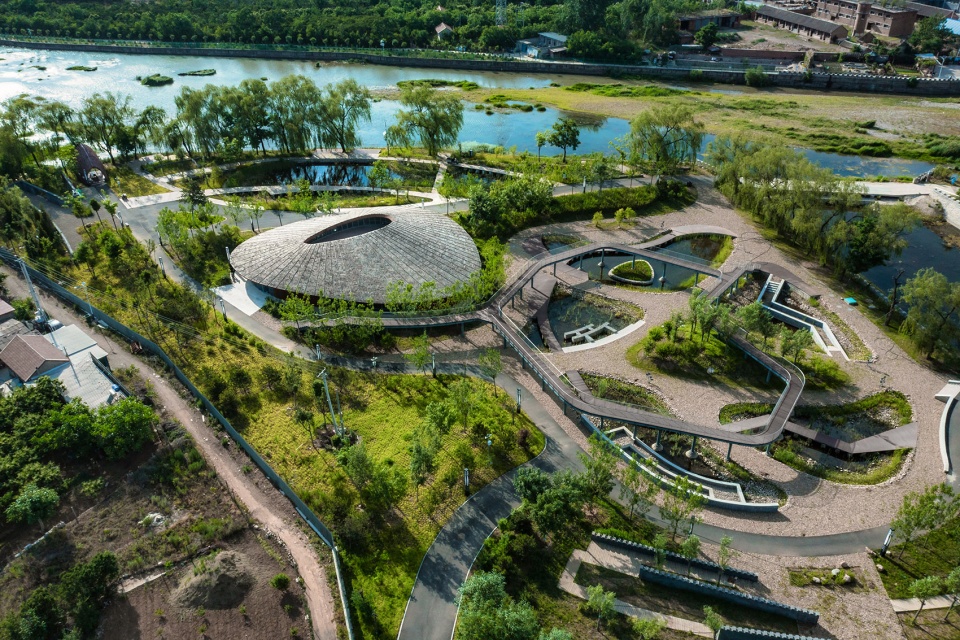
Huanxiu Lake Science Popularization and Education Center by Atelier Folie
Beijing-based practice Atelier Folie has topped its building of Huanxiu Lake Science Popularization and Education Center with a curved roof shaped by 24 steel rafters of varying length, each supported on the inner and outer ring beams and placed at a different angle.
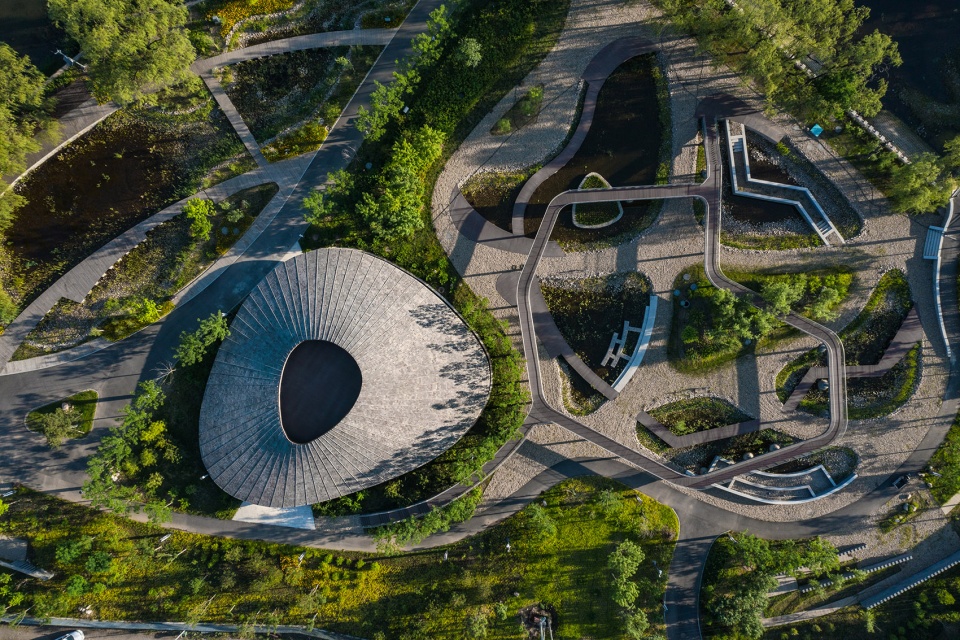
Huanxiu Lake Science Popularization and Education Center by Atelier Folie
The beautifully designed shingle roof slowly extends downward, which makes the building become long and slender taking the shape of a rounded triangular form that integrates seamlessly into the oval plot of land. It also encloses the space under the corridor, extending the exhibition space.
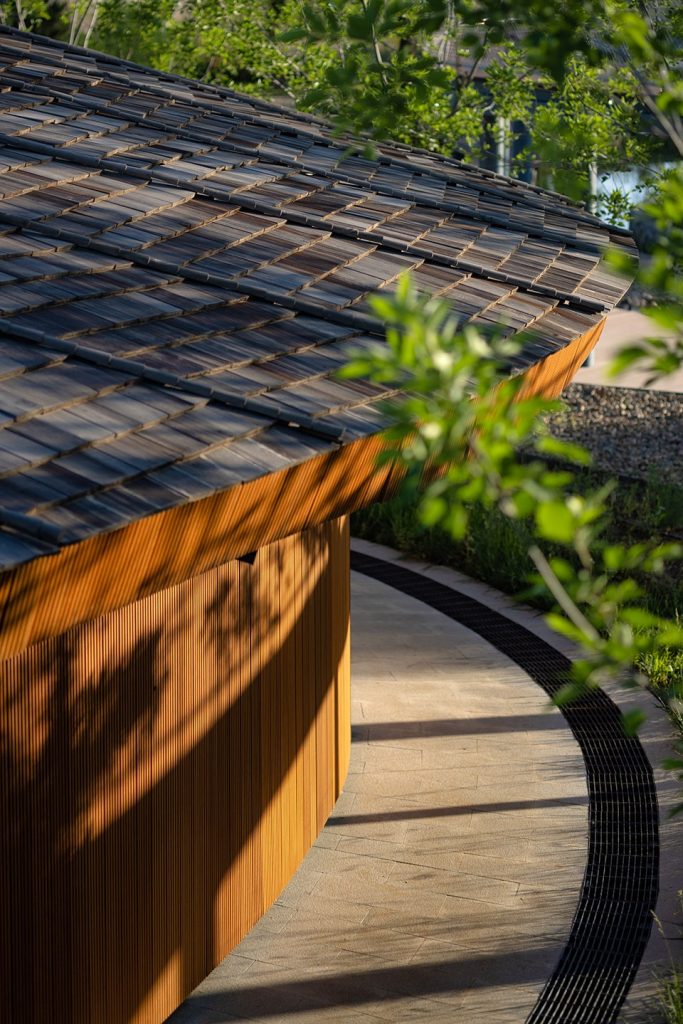
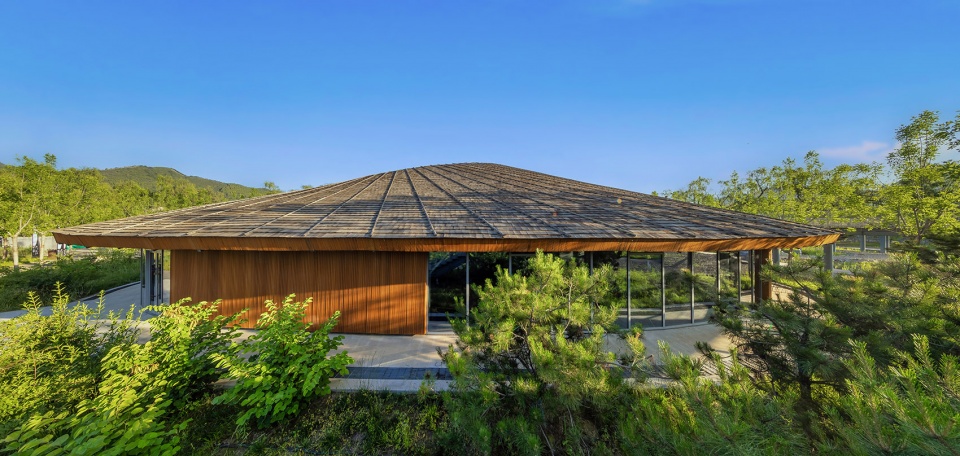
Huanxiu Lake Science Popularization and Education Center by Atelier Folie
The sculptural roof informs the overall ring-shaped design of the building. Designed as part of the Huanxiu Lake National Wetland Park, which focuses on wetland conservation, resource utilization, education, and scientific research, the center features a multi-purpose hall at its core, with a second-level open terrace that offers panoramic views of the hill. The terrace offers a magnificent view, with the roof side sloping towards the dam, overlooking the wetland landscape of the park, and the gurgling stream in the middle, and the mountains in the distance.

Huanxiu Lake Science Popularization and Education Center by Atelier Folie
In order to achieve harmony with the traditional village and natural environment, the design precisely controls the height of the building at about seven meters to keep it the same level as other residential buildings in Xiaying town.

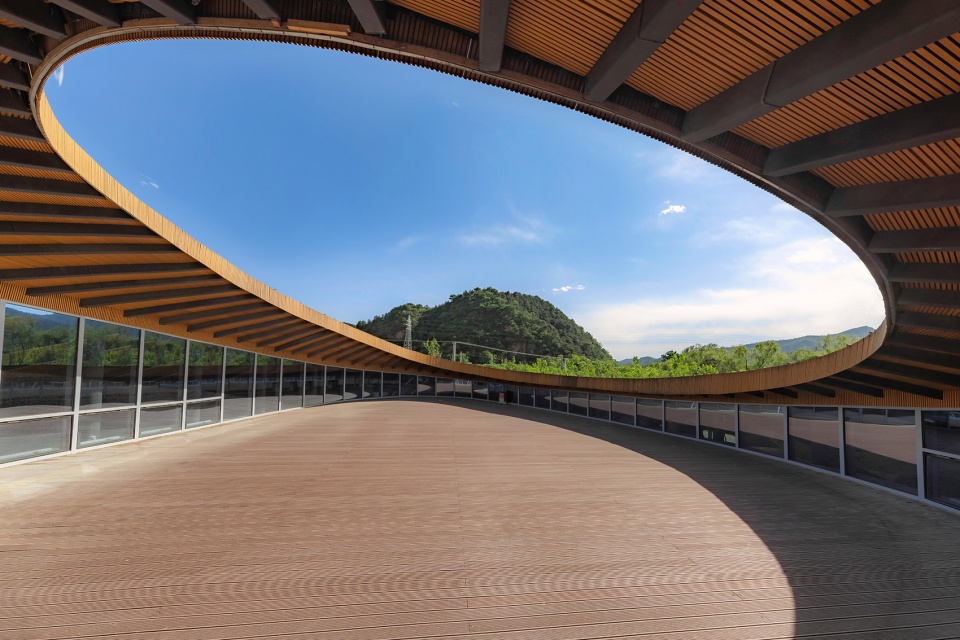
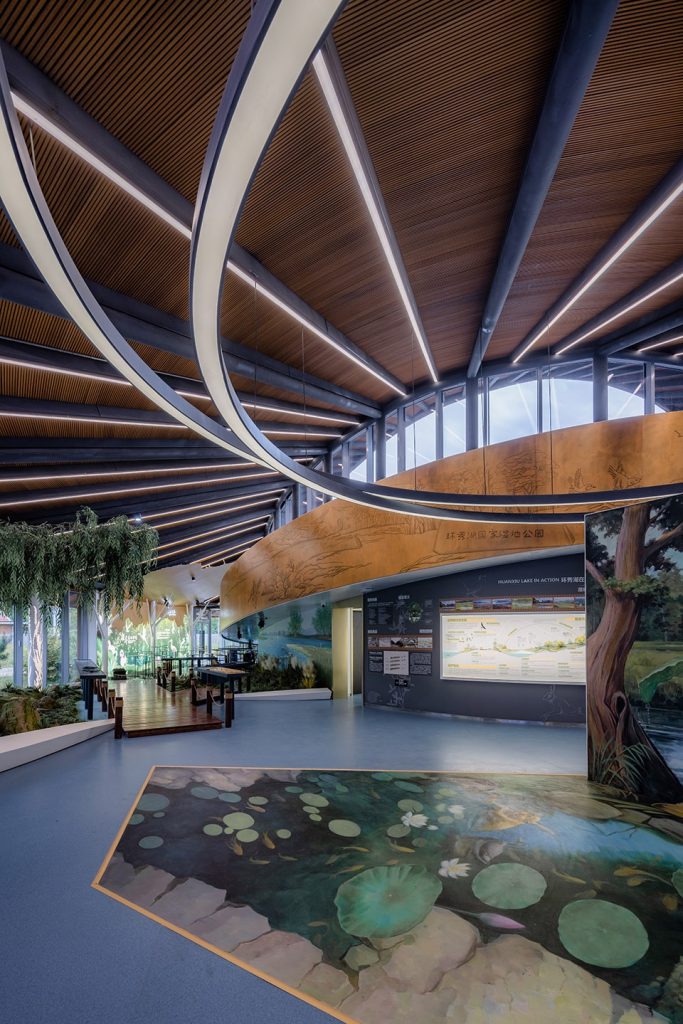
Huanxiu Lake Science Popularization and Education Center by Atelier Folie
In addition to height control, the design also integrates a continuous glass curtain wall to create a natural transition from the indoor exhibition to the outdoor garden, makes the view more light and transparent for the indoor exhibits. The sunlight shines inside along the inner glass curtain wall, bringing dynamic light and shadow effects to the continuous circular ramp leading to the second-floor platform.

YEZO by LEAD (also header image)
Hong Kong-based practice Laboratory for Explorative Architecture and Design ltd. (LEAD) has unveiled a conceptual design for a small retreat, nestled in the northern mountain range of Hokkaido in Japan. Titled YEZO, the project’s elegant and fluid space follows a highly minimalist, yet expressive, performance-driven material and construction approach to create a private sanctuary surrounded by nature.
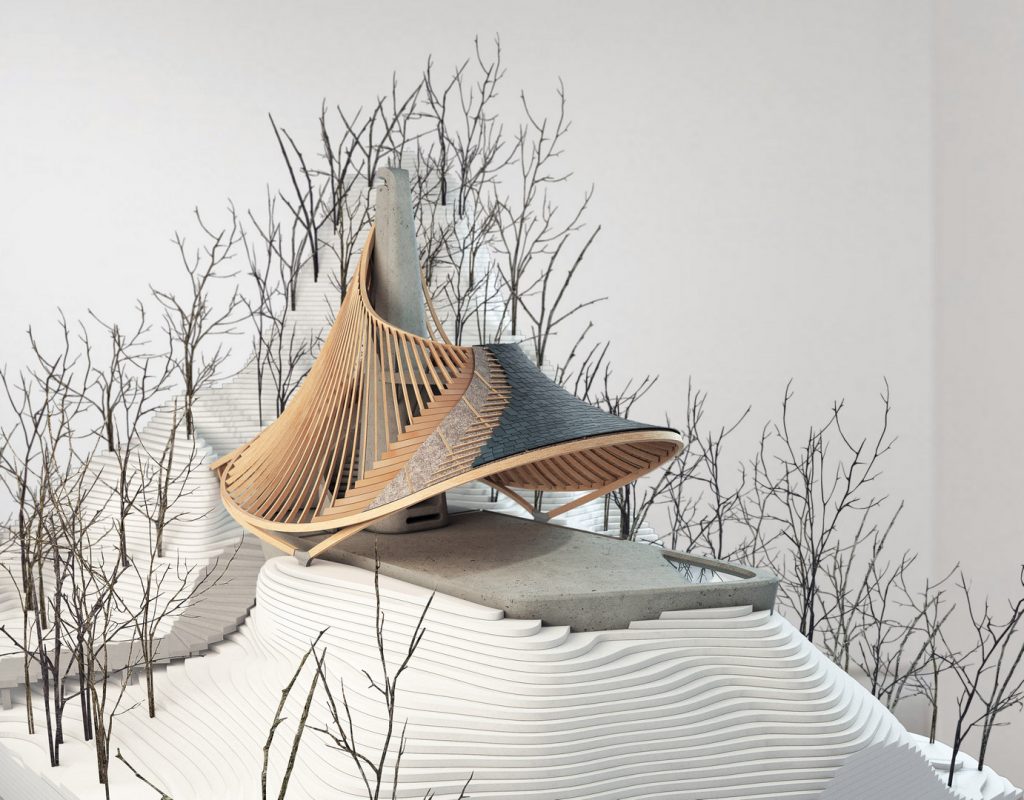
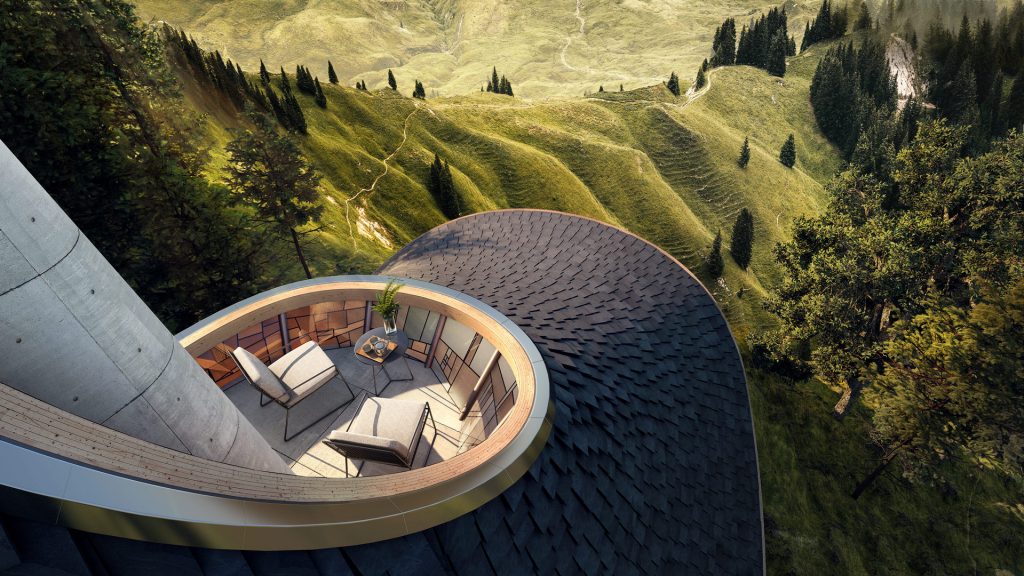
YEZO by LEAD
The team centered the design around a massive wooden roof shell. The impressive structure consists of glue-laminated (GluLam) timber beams that are suspended from the chimney and clad with regionally sourced black slate.
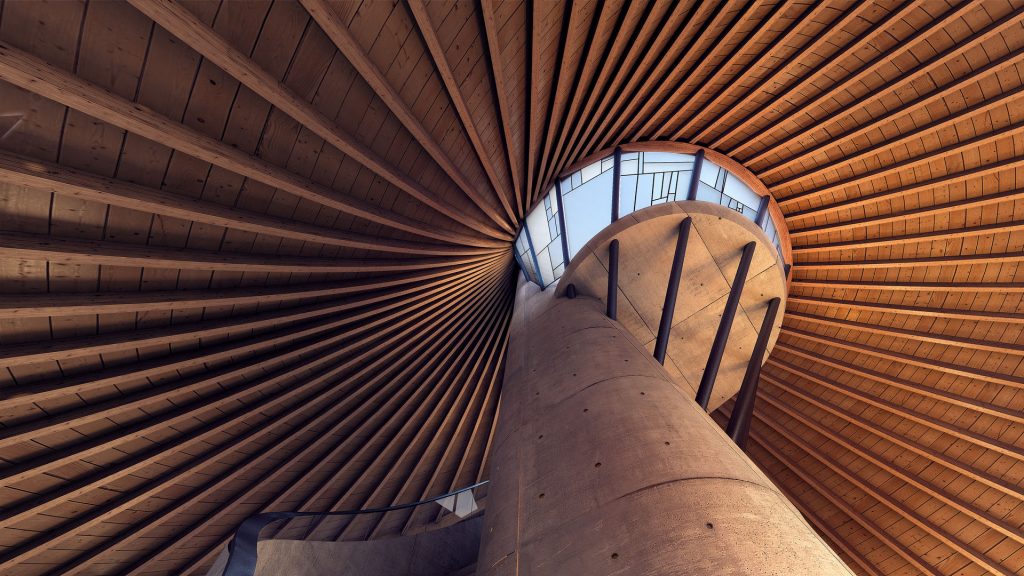

YEZO by LEAD
GluLam timber is a structural engineered wood material that serves as an alternative to less sustainable old growth-dependent solid-sawn timber. YEZO’s curved GluLam beams are carefully shaped to operate in pure tension throughout, resulting in a weight- and material reduction of 90% when compared to straight beams. Their shape is optimised to allow fabrication from one single mould. This approach minimises the project’s ecological impact and reduces manufacturing cost and delivery time while maintaining a qualitative spatial design.

Naoshima Hall by Hiroshi Sambuichi (via dezeen)
Huge sculptural roofs made from cypress wood provide shelter for this community centre and hall, completed by local architect Hiroshi Sambuichi on a small Japanese island of Naoshima in the Seto Inland Sea. The two roofs are built using a different type of structure. The architect made use of several traditional Japanese building techniques for the project.
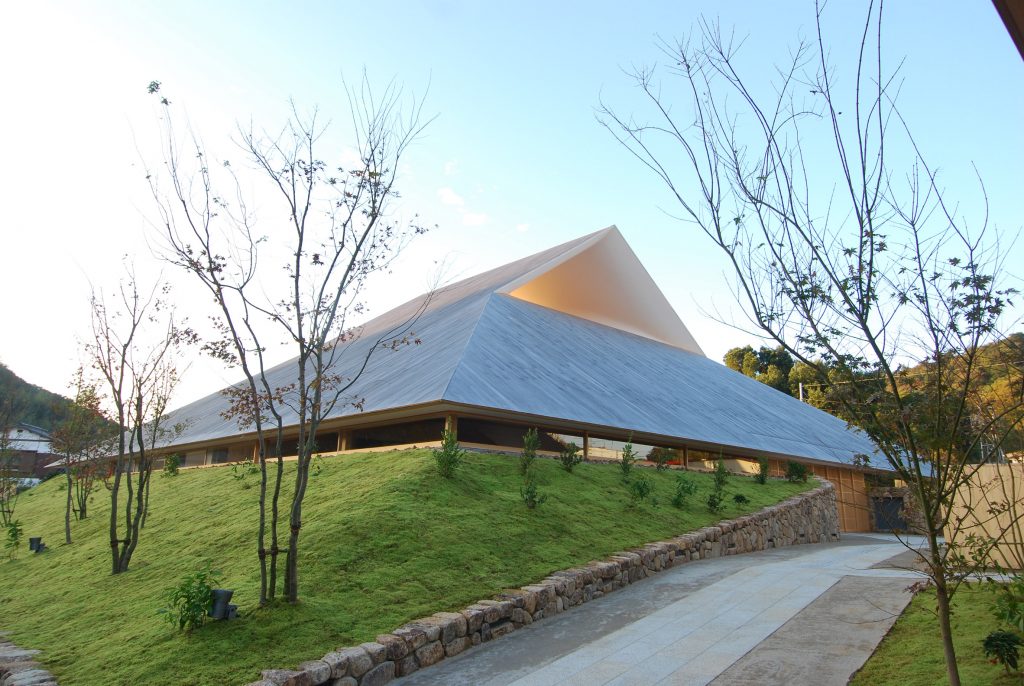
Naoshima Hall by Hiroshi Sambuichi
The largest and more unusual of the two roofs is the one that tops the community hall. It utilizes a traditional hipped shape that is often seen in the villages of Naoshima and is used to visualize the flow of moving materials on the island. Simultaneously, the structure features a large triangular hollow beneath its apex, which produces a pressure differential that allows fresh air to circulate ins the building.

Naoshima Hall by Hiroshi Sambuichi
The angle of the roof also matches the incline of the grass slope, on which the hall is set. This angle is emphasised by the multi-tonal Japanese cypress – known locally as hinoki – that extends vertically across its surface.

Naoshima Hall by Hiroshi Sambuichi
The smaller roof above the community centre consists of thin louvre-like strips of hinoki. A structure that provides protection from rain while allowing breezes to gently pass through, it inherits the principles of the Japanese traditional thatched roof. At the top of this roof is a generous rectangular skylight.
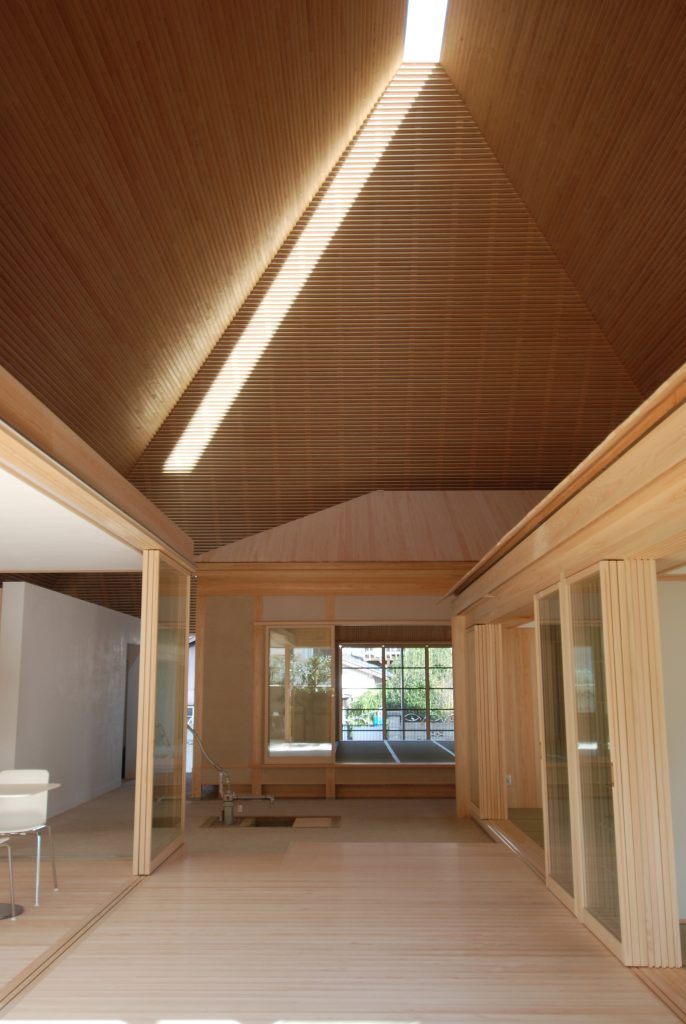
Naoshima Hall by Hiroshi Sambuichi
Four smaller buildings are arranged underneath the roof, creating a mix of sheltered indoor and outdoor spaces emulating the traditional layouts found in Naoshima.